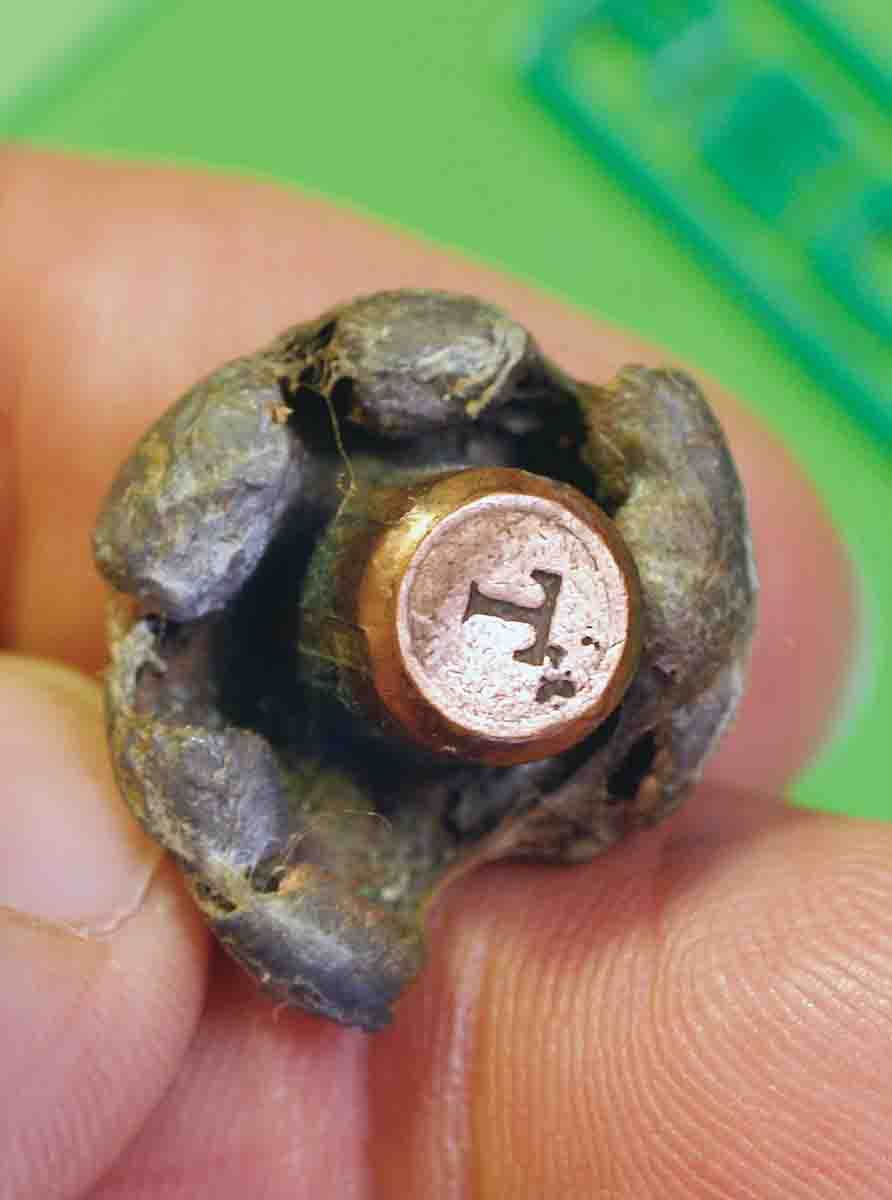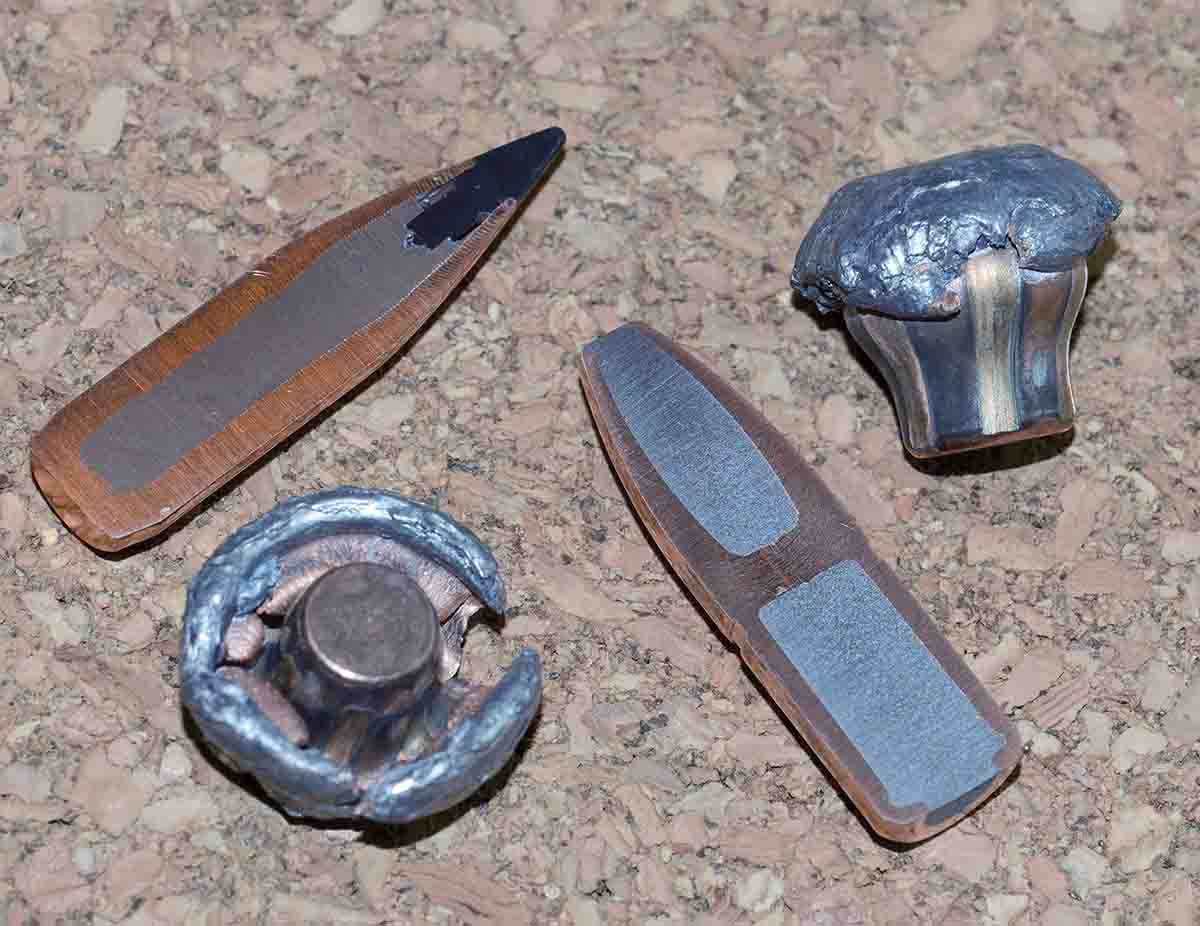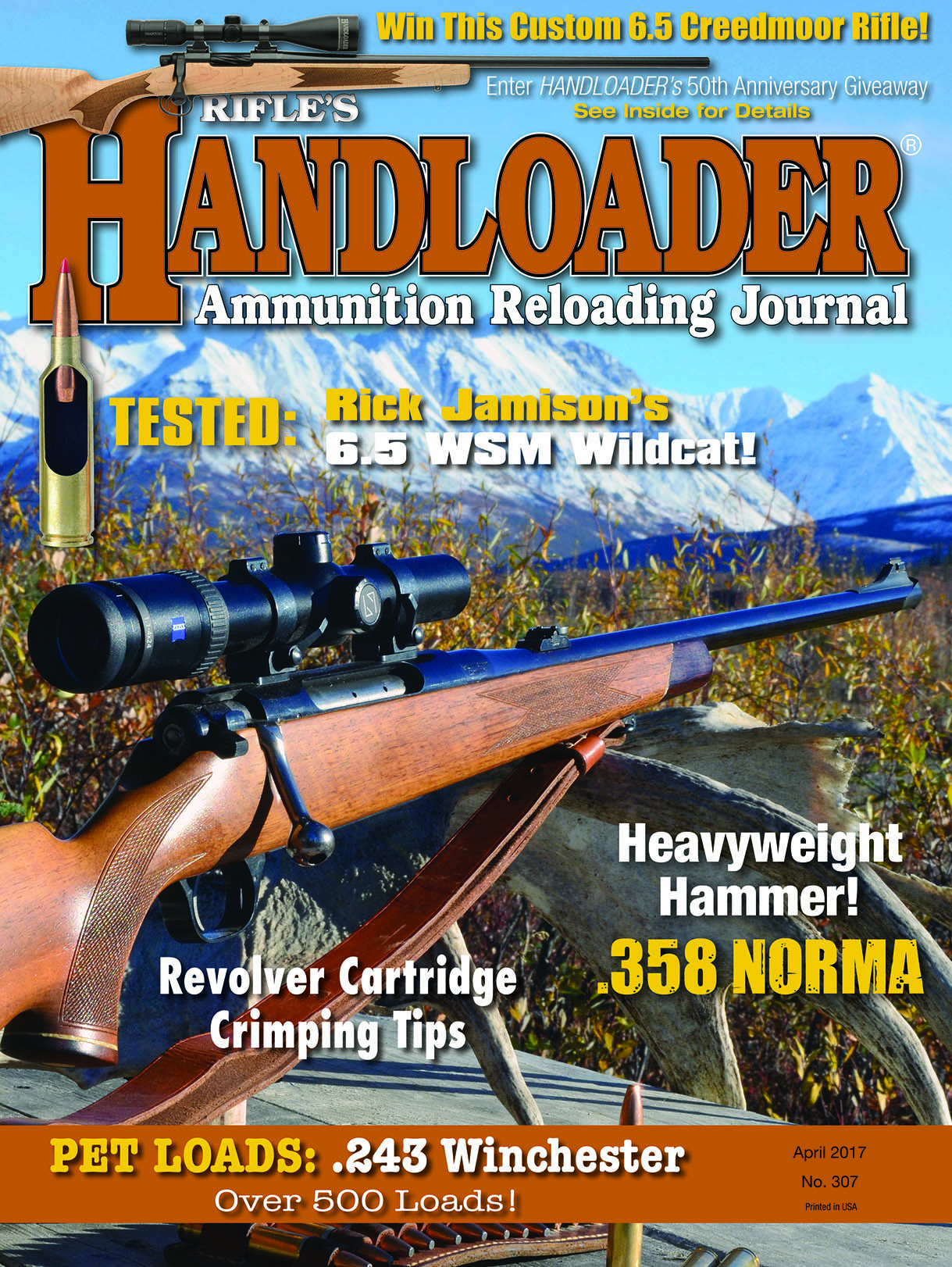In Range
Premium Bullets
column By: Terry Wieland | April, 17
In a deer camp in Kansas last year, the question was asked: Are premium bullets worth the money, or is it all a scam? The man asking the question was carrying a 7mm Remington Magnum, using factory ammunition loaded with standard Remington bullets. He’d been around, had hunted quite a bit, shooting animals of various sizes. In his experience, he said, the old Core-Lokt worked just fine. Why should he pay more?
There is no easy, all-inclusive answer to that question. In fact, it raises a host of others: What cartridge are you using? Bullet weight? Velocity? What distances are you shooting at, and how big are the beasts? Probably the most important question, however, and the one that needs to be answered first is, what exactly is a premium bullet?
The word premium, which, according to Oxford, dates back to 1601, has several meanings, but the one we are concerned with is “more than the usual value.” In other words, better than average – but how much better? Anyone can tack the word “premium” onto a product and not justify it in any way. There is no exact measurement.

In America, the first bullet that could be considered “premium” was the Nosler Partition, introduced in 1948. The German RWS H-Mantel bullet, which is a very similar design, preceded the Partition by 12 years, but since it was expensive, hard to find and made mostly in odd sizes, it never became a real player in the U.S. The Partition did, and from the beginning it was recognized as a better hunting bullet. It was also more expensive: A box of 50 cost about as much as a box of 100 of anything else.
For more than half a century, ammunition makers had been trying to design a bullet that would fulfill three requirements aside from the usual one of acceptable accuracy: An expanding bullet needed to open up reliably at low velocities, hold together at high velocities and penetrate to the vitals without coming apart. The ideal was a “mushroom” shape.
The Partition has a copper wall between two lead cores, front and back. The soft lead front core will expand even at low velocities, but once the jacket peels back to the partition, expansion stops, leaving about 60 percent of bullet weight to continue on into the animal. Typically, this truncated slug is found under the skin on the far side.
The next step was the Bitterroot bullet, developed and manufactured by Bill Steigers. The Bitterroot used a secret process to bond the lead core and copper jacket together, so that even as it expanded, the core and jacket never separated. These were great bullets, but they were expensive and, more critically, very hard to get because of small production runs.
It was this difficulty that led Jack Carter to develop the Trophy Bonded Bear Claw. Around the same time, Lee Reed developed the Swift A-Frame that combined the partition principle with a bonded core. These developments took place in the latter 1980s, and by the mid-1990s, “premium” game bullets were pretty well established in the minds of knowledgeable hunters. Not so, however, in the minds that were guiding the fortunes of big ammunition companies. At first, they denied there was any such thing as a premium game bullet; later, they started tacking the word “premium” onto a number of disastrous developments, such as Winchester’s ill-fated Black Talon in 1993.
Most ammunition companies were afflicted with the “not invented here” attitude. An exception was Norma, which had been loading Weatherby ammunition for years using Hornady bullets in standard loads and Nosler Partitions for the more expensive ones. Norma’s own bullets were good, but the company began loading Partitions in its own line as a premium offering. Federal went further; instead of trying to develop a premium game bullet, it started offering Partitions, Swift A-Frames and Woodleighs (a fine Australian bonded bullet) in its loaded ammunition. Federal later acquired the rights to manufacture Trophy Bondeds, and that became its in-house premium bullet.
Over the past 10 years, there have been any number of developments in the field. Ammunition companies have designed their own bullets or formed partnerships with bullet makers. The specialty makers have come out with one so-called “premium” bullet after another, some employing bonding as the hook; others are using composite tips, ribs or abandoning lead cores. Most of these are more expensive than standard bullets, but are they any better, really, when it comes to hunting big game? That was the question my interlocutor was asking over lunch that day in Kansas, and there was simply no easy answer.
Let’s look at it from a different point of view. What is a premium bullet supposed to accomplish? The main goal is to utilize the benefits of higher velocity without having the bullet disintegrate on impact.
With cartridges like the .30-30 or .35 Remington, there is little benefit that a premium bullet could add. Their bullets are relatively heavy, and at midrange velocities (low, actually, by today’s standards) they hold together, penetrate and generally do the job.
But take a .270 Winchester. A normal 130-grain bullet at 3,100 fps is excellent for white-tailed deer but is not going to hold together if you hit the shoulder of a moose. Bond the core so that it retains 80 to 90 percent of its weight, however, and it will both hold together when hitting bone and keep its weight for deep penetration.
My new acquaintance with a 7mm Remington Magnum was hunting Kansas white-tailed deer, using standard 140-grain bullets. Using a tough premium bullet would probably work against him since, with little resistance, it could pass through without opening up. It might well have killed the deer eventually, but chances are it would be a long chase. This happened to me in Tanzania in 1990. I was using the then-new Trophy Bonded 115-grain .257 bullet in a .257 Weatherby Magnum. I nailed an impala at about 100 yards, but the bullet passed between the ribs on both sides. It did not expand at all, and the impala dived into the long grass. We caught up to it an hour later, but it was a nerve-wracking experience. With Weatherby ammunition loaded with the standard Hornady 100-grain bullet, that impala would probably have dropped where it stood.
Conversely, on that trip I also killed two zebras, a topi, a tsessebe, two warthogs and a wildebeest with the same rifle, and all dropped with one shot. Some ran a few yards, but none went far.
Today, there are so many “premium” bullets on the market, it’s hard to keep track. Some are genuinely good, others not so good, and a few are outright frauds. The word “bonded” is tossed around so much it has become almost meaningless.

When I was preparing a .270 Winchester for the Kansas hunt, I worked with three different bullets, looking for the best combination of accuracy and velocity. Two of them were premium bullets – Nosler 130-grain Partition and Swift 130-grain Scirocco II – but neither delivered the accuracy I got with the old, proven, non-premium but still excellent Sierra 130-grain SBT GameKing. I went with the Sierra and got two deer with two shots. One, at 145 yards, ran about 50 yards; the other, at 103 yards, dropped where it stood.
In the end, the use of premium bullets is a lot like premium gasoline. In some cars it adds to performance, while in others it either adds nothing for the higher price or actually detracts from performance. The same is true of bullets. You have to match the bullet to the cartridge for the game being hunted and the expected conditions.
Much of the time, none of us need a premium bullet; at other times, they’re worth their weight in gold. There is, alas, no hard and fast rule that applies to every cartridge in every case.


